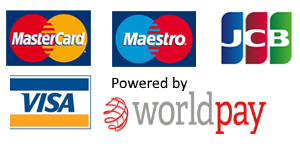“Modern Slavery Act: Construction is one of the most at risk sectors with 18% of global forced labour victims working in the industry.” – Supply Chain Sustainability School
The Modern Slavery Challenge
The Modern Slavery Act 2015 has come about because this topic is a pervasive one, with an estimated 49.6 million victims worldwide. This hidden crime affects numerous industries, including the built environment and its supply chains. As a business operating within this sector, understanding your responsibilities under the Modern Slavery Act 2015 is of great importance. This legislation mandates that businesses take steps to eradicate modern slavery from their operations and supply chains.
Global Due Diligence Legislation and Your Supply Chains
The global landscape is shifting, with a growing wave of due diligence legislation aimed at tackling modern slavery. These laws demand that companies scrutinise their supply chains more rigorously. Failing to comply can lead to severe legal and reputational consequences. Therefore, it’s essential to stay informed about these developments and understand how they impact your business practices.
Educating Employees and Supply Chain Partners
One of the most effective ways to combat modern slavery is through education. Do your employees and supply chain partners know how to spot the signs of modern slavery? Training courses are very important and easily accessible. Ensuring that everyone involved in your supply chain is vigilant and informed can significantly reduce the risk of modern slavery infiltrating your operations.
Setting Up Your Sites to Combat Modern Slavery
Combating modern slavery begins at your sites and it starts with implementing robust policies and procedures. This includes:
- Conducting regular risk assessments.
- Establishing clear reporting mechanisms for suspected cases of modern slavery.
- Providing training and resources to employees and subcontractors.
- Ensuring transparent and ethical recruitment practices.
Demonstrating Due Diligence
Demonstrating due diligence involves more than just compliance. It’s about actively seeking out and addressing risks within your supply chains. This can be achieved by:
- Conducting thorough audits of your suppliers.
- Engaging with stakeholders to understand their practices.
- Regularly reviewing and updating your anti-slavery policies.
Identifying Risks in Your Supply Chain
Understanding where the risks lie in your supply chain is the first step towards mitigating them. High-risk areas often include:
- Sectors with a high demand for low-skilled labour.
- Regions with weak labour laws and enforcement.
- Subcontractors with poor oversight.
By identifying these risk areas, you can focus your efforts on the most vulnerable parts of your supply chain.
Embedding Best Practices in Procurement and Contract Management
Integrating best practices in combating modern slavery into your procurement processes and contract management includes:
- Setting clear expectations for suppliers regarding anti-slavery practices.
- Incorporating anti-slavery clauses in contracts.
- Regularly monitoring and assessing supplier compliance.
- Collaborating with suppliers to improve their practices.
Utilising Resources for Guidance and Support
To support businesses in these efforts, organisations like the Supply Chain Sustainability School offer valuable guidance and resources. These tools can help construction companies and their employees understand and implement best practices to combat modern slavery effectively.
Final Thoughts
Addressing modern slavery requires a proactive and informed approach. By understanding your responsibilities under the Modern Slavery Act 2015, educating your workforce, and implementing rigorous due diligence processes, you can play a crucial role in eradicating this grave issue from your supply chains. Utilising available resources and embedding best practices in your procurement and contract management will further strengthen your efforts.
To raise awareness of this issue the NAS recommend utilising the Supply Chain Sustainability School who have developed guidance and resources for construction companies and employees. Find out more and access resources visit their website here.
For all other shopfitting-related courses, see our approved providers here.


